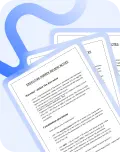#11393 - Preliminary Injunctions - Modern American Remedies 4th Ed. Laycock
Courts formulate the tests and ask the questions they do because they are worried about the risk of ERROR (since this is before an adjudication on the merits)
Preliminary Injunction: Enjoining Defendant before a full case on the merits is held. Focus of the preliminary injunction hearing is on the irreversible harm that will happen BEFORE trial.
-
Allowing preliminary injunctions (1) increase the risk of error (i.e. a COURT potentially inflicting permanent irreparable injury on a plaintiff by erroneously denying a preliminary injunction, allowing defendant to harm plaintiff during the inevitable delays of litigation; and (2) creates a risk that a COURT may inflict permanent irreparable injury on a DEFENDANT by issuing a preliminary injunction that should never have issued (After a final decision is rendered, we can obviously know whether an injunction show issue or not, but at the preliminary state we do not know fully)
-
Posner-Leubsdorf insight is at the preliminary injunction state, courts should minimize the sum of these two risks. The sliding scale approach of the Winter test in lower courts substantially implements that insight.
Note that Posner has the right idea, but his formula, taken on its face, assumes an equal probability of success and probability of harm (which was not the same in Lakeshore) nor does he consider that there are many possible harms all with different probabilities.
-
|
The Status Quo Test (sometimes influences decisions): “the underlying purpose of the preliminary injunction is to preserve the relative positions of the parties until a trial on the merits can be held” (i.e. don’t change the respective relations between the parties)
Test was reaffirmed in the Tenth Circuit in 2003 by a court that said “preliminary injunctions changing the status quo are DISFAVORED”. Plaintiff must make “a strong sowing both with regard to the likelihood of success on the merits and with regard to the balance of harms”
Two Types of Error:
Erroneous Denial: Plaintiff will just have his usual remedy. It is likely defendant is currently already harming P in some way, so when the full trial is adjudicated, if he wins on merits he will be able to seek all damages up to the date of decision.
Erroneous Grant: there is not a tort or a breach of contract action here, defendant otherwise has NO cause of action. If there is an erroneous grant of preliminary injunction that ends up getting reversed, plaintiff is strictly liable for up to the amount of the bond in damages to the defendant (see bonding requirement below)
|
Waiver of Bond: Courts at their discretion can waive bond where they think it would wholly exclude poor plaintiffs from access to injunctive relief
Most courts hold now that whether to apply a bond at all and how much is all discretionary: consider the potential loss to D, financial hardship to P, and public importance of right being forced.
Would assume that if courts are going to waive bond they would increase scrutiny because defendant is thus taking on a larger risk (won’t be able to collect damages)
Appeals: TROs are not appealable, preliminary injunction are – can file a motion to stay the injunction pending an appeal (both denials and grants of preliminary injunctions are appealable – you could actually get an order granting a preliminary injunction pending an appeal if your preliminary injunction is denied).
|
purchase it now!

